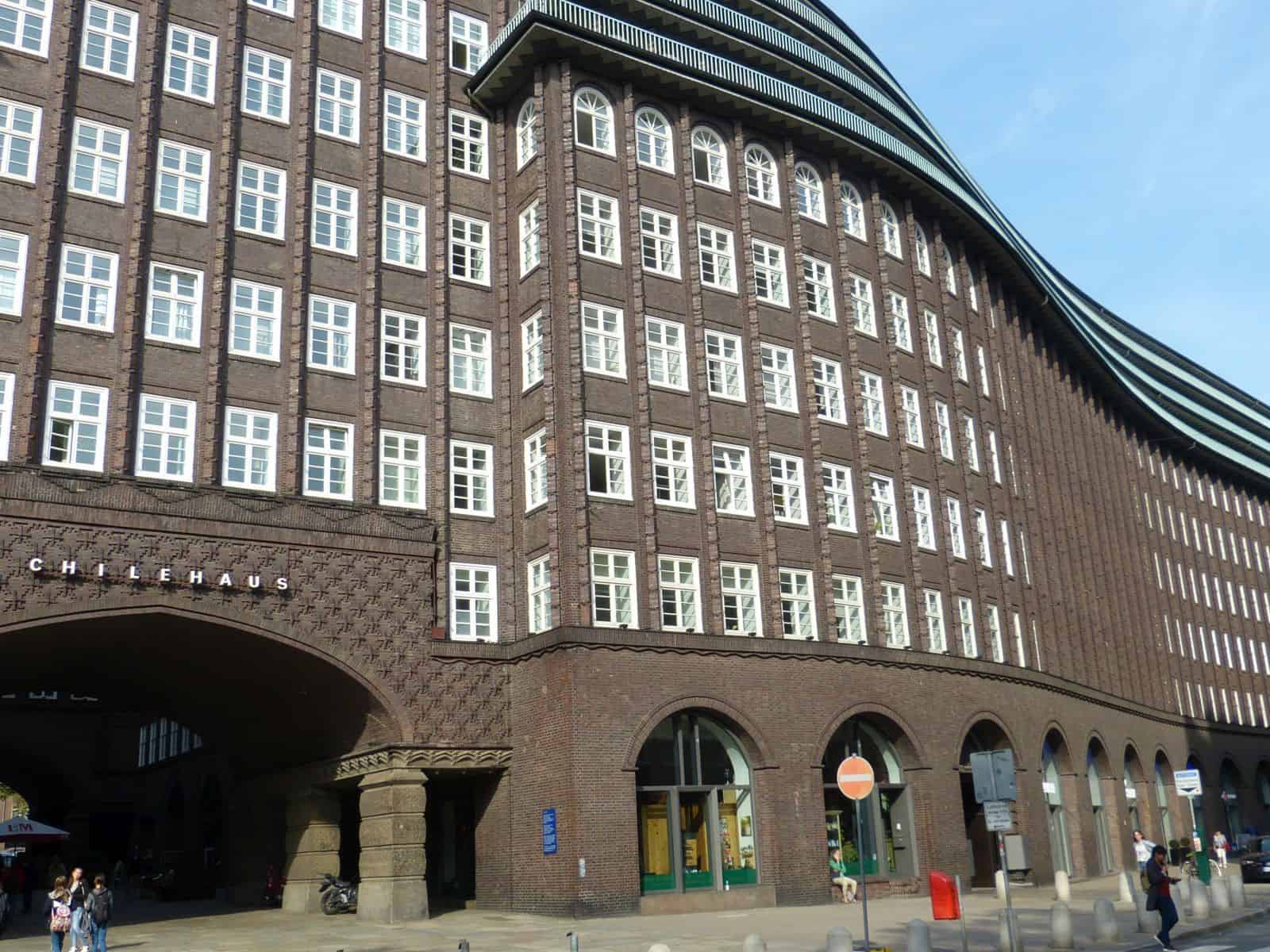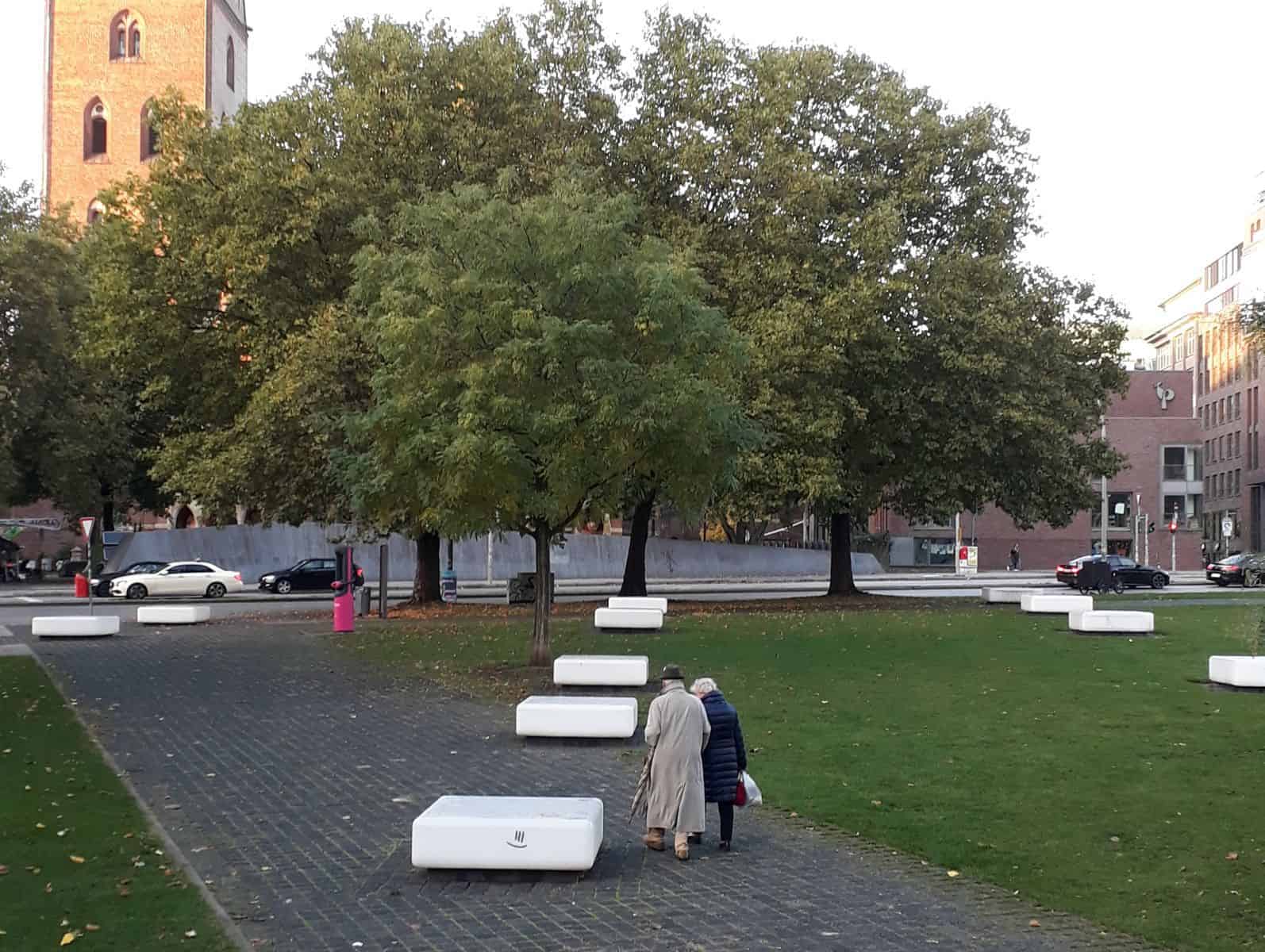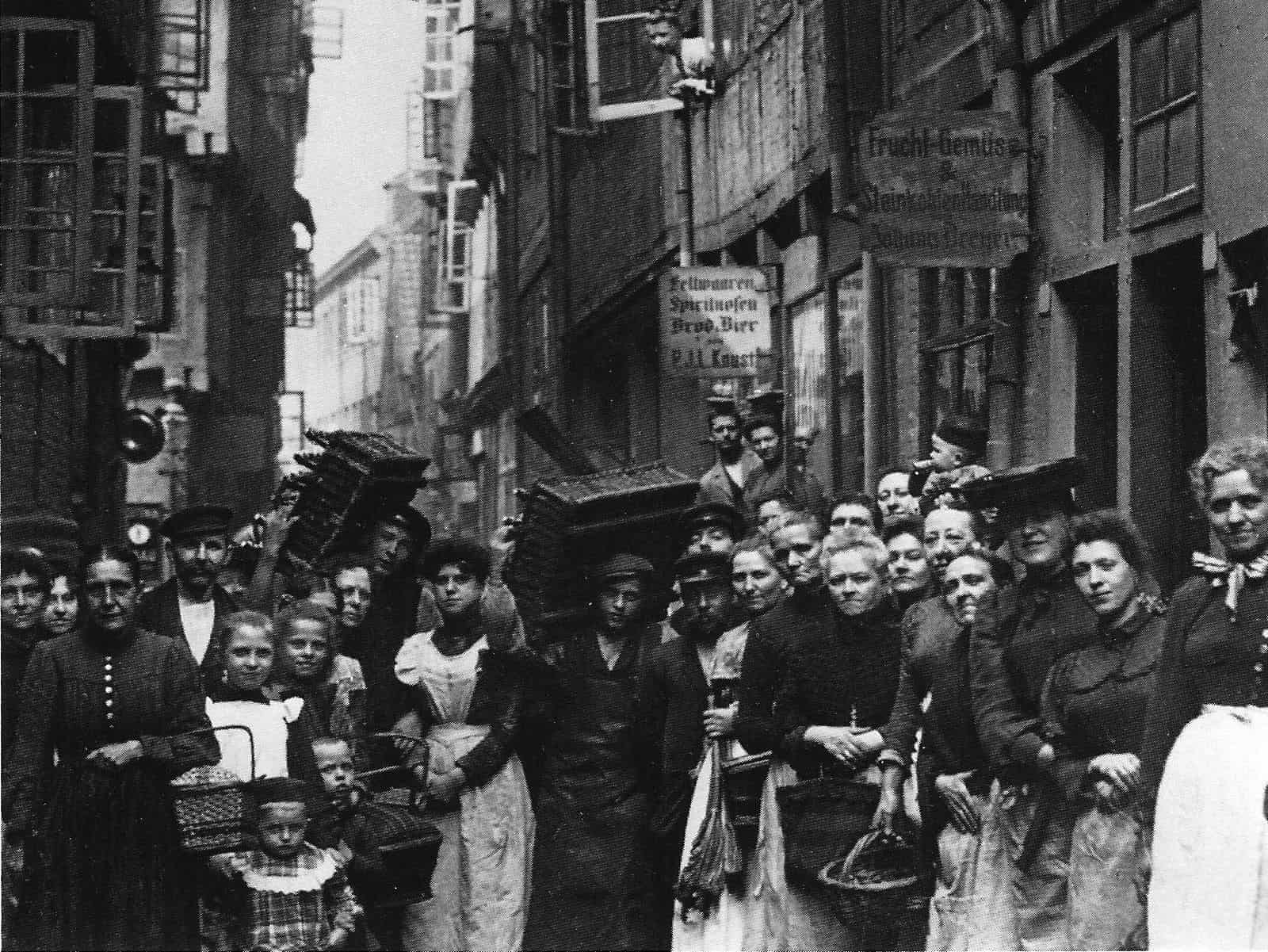Kontorhausviertel Hamburg Guided Walk
Together with the Speicherstadt, the Kontorhausviertel has been a UNESCO World Heritage Site since 2015.
It was created around 1912 where thousands of people previously lived in poor conditions in one of the notorious “Gängeviertel”. An entire district of rental office buildings was built here – an impressive and globally unique collection of clinker brick buildings with beautiful design elements.
Even today, when taking a tour through the Kontorhausviertel in Hamburg, the atmosphere created by this architecture is still fascinating, and small shops, cafés and restaurants invite you to linger.
A walk through Hamburg Altstadt
The Hamburg Kontorhaus
More than an office building
Over the years, the Hamburg Kontorhaus has become an architectural landmark. Originally designed as commercial and office buildings, the Kontorhäuser were built in the 19th century with red clinker bricks, which still characterise their façades today. With the rise of Expressionism in the 1920s, some office blocks such as the Chilehaus became iconic examples of this architectural style.
The buildings were not only designed to be functional, but also aesthetically pleasing with ornate decorations and sculptures. Around 240 Kontorhäuser are still preserved in Hamburg today.
Modern times
It was new for a building to be built exclusively for office purposes and for several companies at the same time. The development of architecture made it possible to dispense with load-bearing interior walls, so that flexible floor plans satisfied the needs of different tenants. Modern building services such as central heating, electric lighting and lifts or paternosters were also among the features of the Kontorhäuser.
Because the ensemble of this type of building cannot be found anywhere else in the world, UNESCO placed the Kontorhaus district under protection together with Hamburg’s Speicherstadt in 2015.
Domplatz and Hamburg's beginnings
Domplatz – Hamburg’s nucleus
In the 9th century, Hammaburg Castle was located on this site and thus formed the nucleus of Hamburg. A small, enclosed settlement at the crossroads of two trade routes was built on this site. People settled here, protected from high water and high enough to recognise intruders in good time. The square was later built on with St Mary’s Cathedral. The white blocks on the square represent its columns. The Johanneum, a school for scholars, then stood here and there was also a car park with a petrol station on this historic square. After archaeologists established beyond doubt a few years ago that this is exactly where Hamburg’s history began, the square remains undeveloped and serves as a meeting place for people, especially at lunchtime.
Around the Domplatz
There is a lot to discover within a few metres of the cathedral square. St Peter’s Church is the oldest of Hamburg’s five main churches, and a climb up its tower offers visitors a unique panoramic view. The ground floor of the ZEIT publishing building houses a Bavarian beer house. One street corner further on, you can find out about the life of former German Chancellor Helmut Schmidt. And in an office building there is a branch of the Archaeological Museum with an excavation from the 12th century.
Brick and clinker
Bricks – Hamburg’s trademark
Wherever you look, you can see clinker brick façades in various shades of red throughout the city. This traditional building material is not only beautiful to look at, but also practical. The climate cannot harm it, it is robust and lasts for many decades, if not centuries. It has been produced in kilns in the Hamburg area since the Middle Ages.
Brick expressionism
The bricks are artfully arranged to create patterns and structures. Architectural ceramics and sculptures make the façades unique, and in the Kontorhaus district you can see beautiful examples of brick expressionism. The Chilehaus is world-famous, its façade and unique shape are unmistakable. But other houses such as the Sprinkenhof or the Messberghof are also worth discovering. It is worth taking a look at the staircases. Bold interior architecture and loving details await.
Gängeviertel
Cramped, dirty, damp
Before the Kontorhäuser could be built from the 1920s onwards, the previous buildings had to be demolished first. This was the last of the so-called Gängeviertel neighbourhoods, where workers’ flats were cramped, dirty and damp. People lived in wretched conditions, diseases spread quickly and the confusing buildings were almost impossible for the authorities to monitor. During one visit, the Berlin physician and biologist Robert Koch is said to have remarked: “Gentlemen, I forget that I am in Europe.”
Offices instead of flats
Offices were now built instead of flats, as this meant that significantly higher rents could be achieved. Even today, there are still only a few flats in this area. New buildings are now being built in an attempt to change this situation and bring more people back to the area.
Today in the Kontorhausviertel - not only offices
In addition to impressive architecture, there is also plenty to discover for gourmets and shopping enthusiasts. You won’t find the big chain shops here. Fortunately, some old, owner-managed shops have survived in this neighbourhood. New ones have been added, also individually and personally run. It’s worth looking for wooden toys or a hat like the one worn by Helmut Schmidt. Or visit the weekly market, which takes place here twice a week.
Although few people live here, there is an unimaginable variety of restaurants. The whole world is united here – and there is also original Hamburg cuisine.
A Walk full of Discoveries
On a tour through the Kontorhaus district, we discover together how Kontorhaus buildings are constructed and what secrets they harbour. We will open the doors of well-known and unknown houses and find great details on the façades and in the stairwells.
These are not museums, people work in every building and we naturally enter these buildings with the appropriate respect.
Fancy a few tips for your own discovery tours? Take a look at the Wikingerhof (Schopenstehl 22), where you will find beautiful wood panelling in the stairwell. Or try to identify the professions that decorate the figures on the façade of the Altstädter Hof. Not that easy.
All about "Greets"
- Duration: two to three hours and absolutely free
- Max. 6 people, no combination of different requests
- Meeting point and exact route: by agreement between guest and Greeter
- Request: please at least two weeks before desired date
- More about Greets






